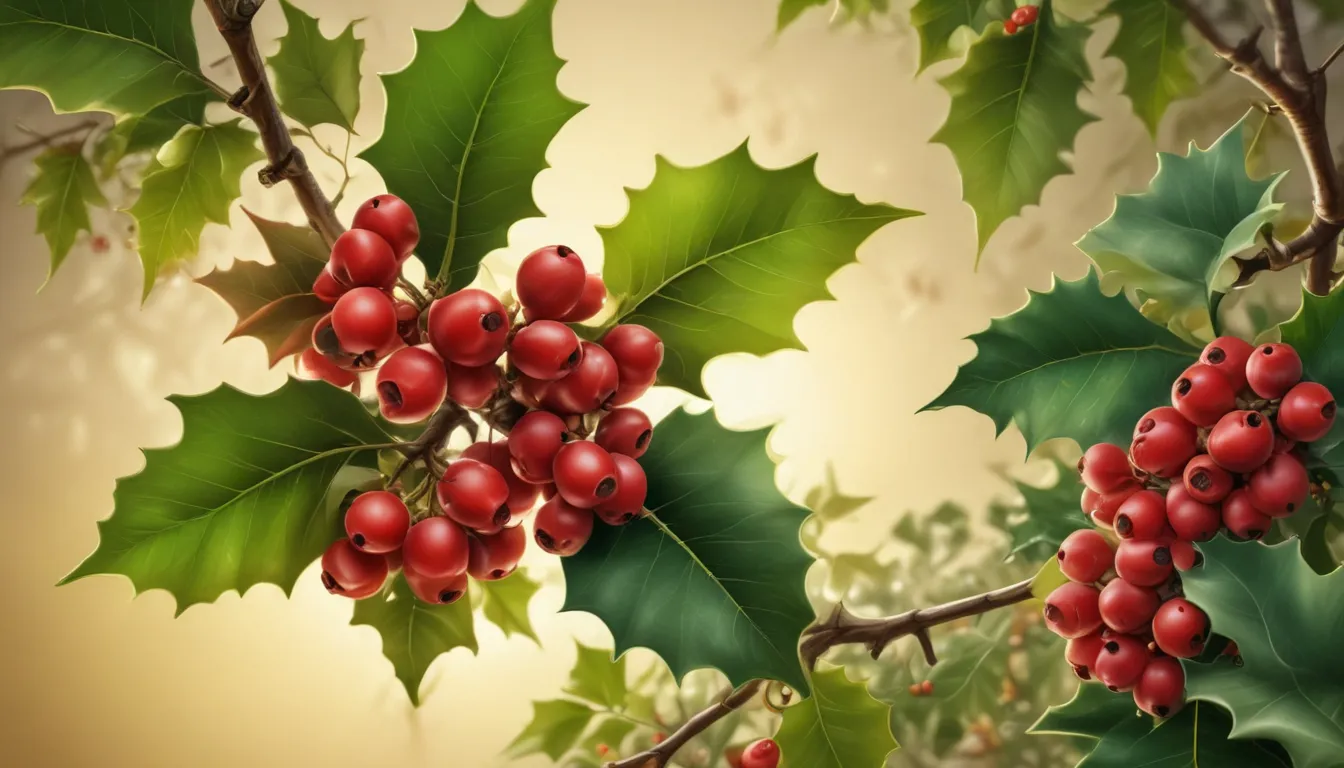The pictures we use in our articles might not show exactly what the words say. We choose these pictures to make you interested in reading more. The pictures work together with the words but don’t take their place. The words still tell you the important facts.
As we step into the magical realm of holly trees, we are greeted by their glossy green leaves and vibrant red berries, a sight that has captivated humans for centuries. Beyond their aesthetic appeal, holly trees hold a wealth of fascinating facts that highlight their significance in cultures and ecosystems worldwide. Join us on a journey through 10 intriguing facts about holly trees, from their historical roots to their ecological impact, as we unveil the timeless allure of these botanical treasures. Whether you're a nature enthusiast, a gardening aficionado, or simply curious about the wonders of the natural world, these insights will deepen your appreciation for these remarkable trees.
Unveiling the Mysteries of Holly Trees
The Holly Tree’s Rich History
The holly tree, scientifically known as Ilex, has held a special place in human culture since ancient times. Revered for its evergreen leaves and bright red berries, holly symbolizes protection, goodwill, and everlasting life in various traditions worldwide.
A Diverse Genus
The genus Ilex encompasses over 400 species, ranging from small shrubs to tall trees. Thriving in different climates, from tropical regions to temperate zones, holly trees showcase adaptability and resilience across diverse environments.
Varied Habitat
Holly trees can be found in a wide range of habitats, from woodlands and coastal areas to gardens and urban landscapes. Their ability to flourish in different environments makes them a versatile and popular choice for landscaping and ornamental purposes.
Unraveling the Beauty of Holly Trees
Distinctive Foliage
The glossy, spiky leaves of the holly tree, often with serrated edges, contribute to its unique charm. Symbolizing endurance, these evergreen leaves have made holly a prominent feature in winter celebrations and decorations.
Berries and Wildlife
The vibrant red berries produced by female holly trees serve as a vital food source for birds during the winter months, highlighting the ecological significance of holly trees in supporting local wildlife.
Cultural Significance
From folklore to religious traditions, holly trees have been intertwined with human culture for centuries. Whether adorning ancient Roman festivals or modern Christmas customs, holly's enduring presence reflects its symbolic importance.
Exploring the Versatility of Holly Trees
Decorative Use
The striking appearance of holly leaves and berries has made them a popular choice for festive decorations. Wreaths, garlands, and centerpieces featuring holly are iconic elements of holiday adornments, adding a touch of natural beauty to seasonal festivities.
Medicinal and Practical Applications
In addition to its symbolic value, holly has been used in traditional medicine and practical crafts. From herbal remedies to woodworking, the versatility of holly extends beyond its ornamental allure.
Environmental Benefits
Holly trees contribute to environmental sustainability by providing year-round greenery, supporting biodiversity, and enhancing the visual appeal of landscapes. Their role in carbon sequestration and soil conservation underscores their ecological significance.
Embracing the Timeless Legacy of Holly Trees
Modern Cultivation
In contemporary horticulture, holly trees are cherished for their ornamental appeal and functional benefits. Through selective breeding and cultivation, new holly varieties have been developed, ensuring the enduring legacy of this timeless tree.
Conclusion
In conclusion, holly trees are fascinating and versatile plants that have captured the imagination of people for centuries. Whether adorning festive wreaths or gracing the winter landscape with their evergreen splendor, holly trees remain a beloved fixture in the natural world and human culture, symbolizing vitality and enduring beauty.
Dive Deeper into the World of Holly Trees
FAQs
-
Can holly trees grow in different climates?
Holly trees are adaptable and can thrive in various climates, including temperate and subtropical regions. However, specific species may have different climate preferences, so choose the right variety for your local climate. -
Are holly berries poisonous to humans and pets?
While holly berries symbolize the holiday season, they are toxic if ingested by humans and pets. Exercise caution and keep holly berries out of reach in households with children and animals.
Delve into the unique characteristics of the Dahoon holly, a species native to the southeastern United States, and expand your holly horizons with its glossy leaves, vibrant red berries, and adaptability to various growing conditions.
Was this page helpful?
Our commitment to delivering trustworthy and engaging content drives us to provide valuable insights to our readers. Every fact on our site is contributed by real users, ensuring a diverse range of information. Trust in our dedication to quality and authenticity as you continue to explore and learn with us.






